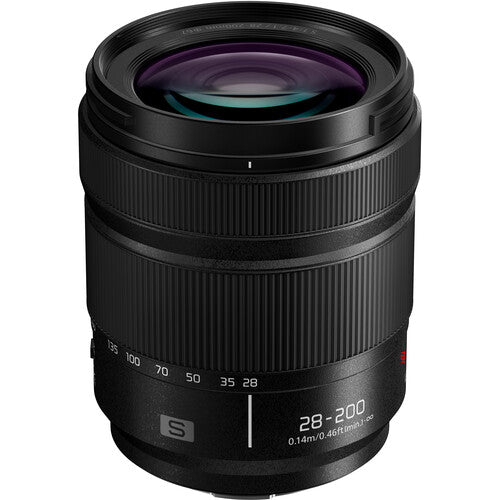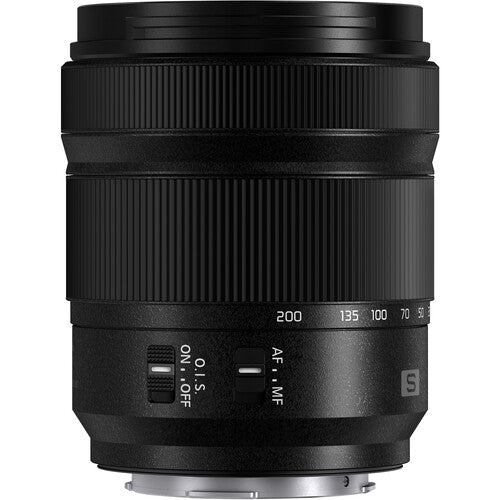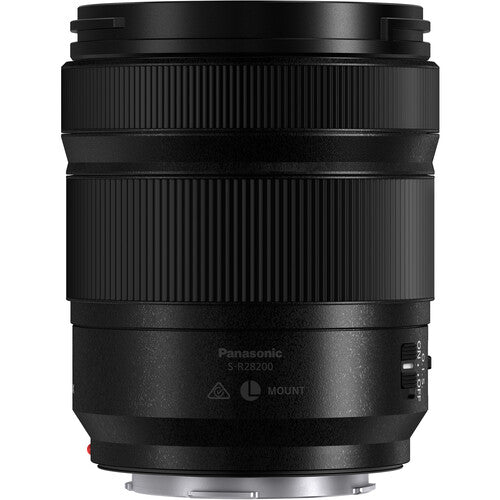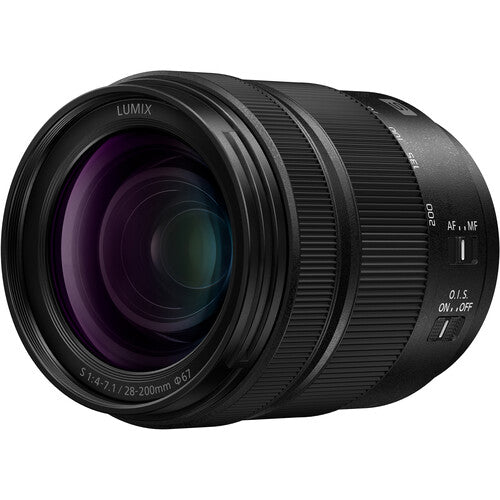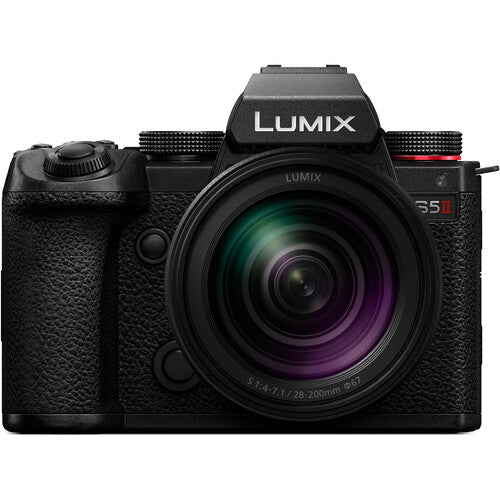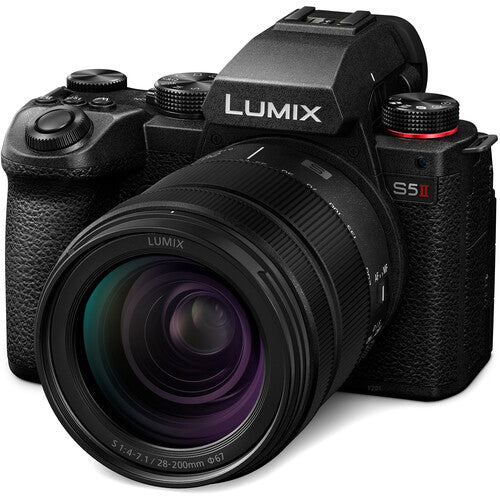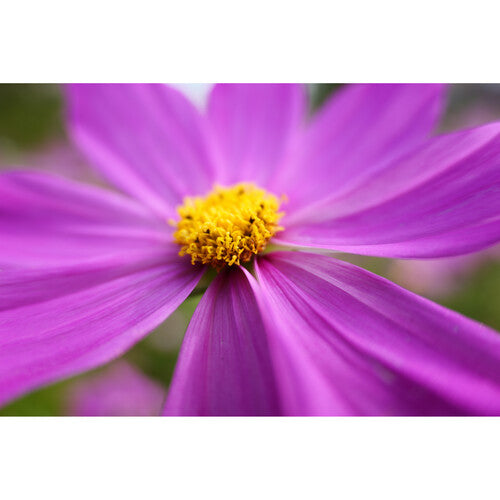Product Description
Introducing the Panasonic Lumix S 28-200mm f/4-7.1 MACRO O.I.S. Lens: Your Ultimate Companion for Full-Frame L-Mount Mirrorless Cameras
Unlock the potential of your full-frame L-mount mirrorless camera system with the versatile Panasonic Lumix S 28-200mm f/4-7.1 MACRO O.I.S. Lens. Designed to offer unparalleled flexibility without compromising on image quality, this lens is a game-changer for both professional and amateur photographers alike.
Optics and Performance
With a remarkable zoom range spanning from wide-angle to telephoto, this lens is your all-in-one solution for capturing stunning portraits and sweeping landscapes. Say goodbye to the hassle of juggling multiple lenses – the Lumix S 28-200mm f/4-7.1 has you covered for every shooting scenario.
Equipped with 5-axis Dual I.S. 2 image stabilization technology, this lens empowers you to shoot handheld with confidence, delivering sharp, blur-free images even in challenging lighting conditions. Experience up to 6.5 stops of correction, allowing you to push the boundaries of creativity while maintaining exceptional clarity and detail.
Superior Construction and Design
Crafted with precision and durability in mind, the Lumix S 28-200mm f/4-7.1 boasts a robust construction that's both dust and splash-resistant, making it the perfect companion for outdoor adventures and unpredictable weather conditions.
Featuring advanced optical elements including one aspherical element and four ED elements, this lens ensures outstanding image quality with minimal distortion and aberrations throughout the zoom range. The 9-blade circular diaphragm produces smooth, creamy bokeh, adding a touch of artistry to your compositions.
Seamless Control and Convenience
Designed for intuitive operation, this lens is equipped with convenient AF/MF and O.I.S. switches, allowing you to adapt swiftly to changing shooting conditions. With a minimum focus distance of just 5.5 inches and 0.5x magnification at 28mm, you can explore new perspectives and capture intricate details with ease.
Compact and lightweight, the Lumix S 28-200mm f/4-7.1 is designed for on-the-go photographers who demand versatility without compromise. Measuring a mere 3.7 inches in length and weighing less than one pound, it's the ultimate travel companion for photographers seeking maximum performance in a compact package.
Conclusion
Experience the freedom to explore and create with the Panasonic Lumix S 28-200mm f/4-7.1 MACRO O.I.S. Lens. From breathtaking landscapes to captivating portraits, this lens redefines versatility, delivering exceptional image quality and performance in any setting. Elevate your photography to new heights and unleash your creative vision with this groundbreaking addition to the Lumix S-series lineup.
Key Features:
-
Exceptional Zoom Range: Covering from wide-angle to telephoto, the lens offers a versatile focal length range of 28-200mm, eliminating the need for multiple lenses.
-
5-Axis Dual I.S. 2 Image Stabilization: Enjoy up to 6.5 stops of correction for sharp, blur-free images even in low-light conditions or when shooting handheld.
-
Advanced Optical Construction: Incorporates one aspherical element and four ED elements to maintain superb image quality with minimal distortion and aberrations.
-
Dust- and Splash-Resistant Design: Built to withstand the rigours of outdoor shooting, ensuring reliable performance in challenging weather conditions.
-
Fluorine Coating: The front lens element is coated with fluorine to repel oil- and water-based substances, making it easy to clean and maintain.
-
AF/MF and O.I.S. Switches: Conveniently located switches on the lens barrel for quick adjustments between auto and manual focus, as well as to enable or disable image stabilization.
-
Compact and Lightweight: Among the smallest and lightest lenses in its class, measuring just 3.7 inches in length and weighing less than one pound, perfect for travel and on-the-go photography.
-
9-Blade Circular Diaphragm: Delivers smooth and pleasing bokeh, enhancing the aesthetic appeal of out-of-focus backgrounds.
-
Minimum Focus Distance: Offers a minimum focus distance of 5.5 inches, allowing for close-up photography and capturing fine details.
-
0.5x Magnification at 28mm: Provides impressive magnification capabilities, enabling you to explore macro photography with ease.
-
67mm Filter Size: Compatible with a wide range of filters, allowing for creative effects and practical filtration options.

